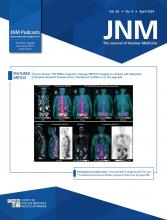Abstract
The permeability-glycoprotein (P-gp) efflux transporter is densely expressed at the blood-brain barrier (BBB) and its resultant 'spare capacity' requires substantial blockade to increase the uptake of avid substrates. This has blunted the ability of investigators to measure clinically meaningful alterations in P-gp function. This study, conducted in humans, examined two P-gp inhibitors (tariquidar, a known inhibitor, and disulfiram, a putative inhibitor) and two routes of administration (intravenous and oral) to maximally increase brain uptake of the avid and selective P-gp substrate 11C-desmethyl-loperamide (dLop), while avoiding side effects associated with high doses of tariquidar. Methods: Forty-two 11C-dLop positron emission tomography (PET) scans were obtained from 37 healthy volunteers. PET was performed with 11C-dLop under five conditions: 1) injected under baseline conditions without P-gp inhibition; 2) injected one hour after IV tariquidar infusion; 3) injected during IV tariquidar infusion; 4) injected after oral tariquidar; and 5) injected after disulfiram. 11C-dLop uptake was quantified with kinetic modeling using metabolite-corrected arterial input function or by measuring the area under the time-activity curve in brain from 10 to 30 minutes. Results: Neither oral tariquidar nor oral disulfiram increased brain uptake of 11C-dLop. Injecting 11C-dLop during tariquidar infusion, when plasma tariquidar concentrations reach their peak, resulted in brain uptake of radioligand approximately five-fold greater than baseline. Brain uptake was similar with 2 and 4 mg/kg IV tariquidar; however, the lower dose was better tolerated. Injecting 11C-dLop after tariquidar infusion also increased brain uptake, though higher doses (up to 6 mg/kg) were required. Brain uptake of 11C-dLop increased fairly linearly with increasing plasma tariquidar concentrations, but we are uncertain whether maximal uptake was achieved. Conclusion: We sought to increase the dynamic range of P-gp function measured after blockade. Performing 11C-dLop PET during peak plasma concentrations of tariquidar, achieved with concurrent administration of IV tariquidar, resulted in greater P-gp inhibition at the human BBB than delayed administration, and allowed use of a lower, more tolerable dose of tariquidar. Based on prior monkey studies, we suspect that plasma concentrations of tariquidar did not fully block P-gp; however, higher doses of tariquidar would likely be associated with unacceptable side effects.
- Neurology
- PET
- Research Methods
- N-desmethyl-loperamide
- P-glycoprotein (P-gp)
- positron emission tomography (PET)
- tariquidar
- Copyright © 2014 by the Society of Nuclear Medicine and Molecular Imaging, Inc.







